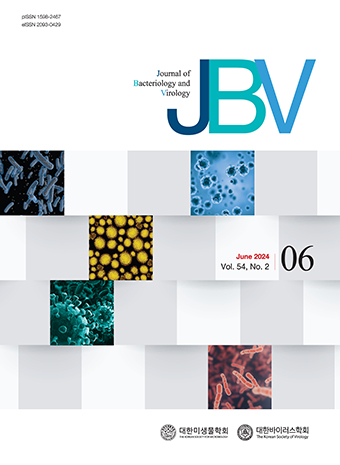Review Article
Abstract
References
Information
Magiorakos AP, Srinivasan A, Carey RB, Carmeli Y, Falagas ME, Giske CG, et al. Multidrug-resistant, extensively drug-resistant and Pandrug-resistant bacteria: An international expert proposal for interim standard definitions for acquired resistance. Clin Microbiol Infect 2012;18:268-81.
10.1111/j.1469-0691.2011.03570.x21793988
Van Duijkeren E, Rantala M, Bouchard D, Busani L, Catry B, Kaspar H, et al. The use of aminopenicillins in animals within the EU, emergence of resistance in bacteria of animal and human origin and its possible impact on animal and human health. J Antimicrob Chemother 2023;78:1827-42.
10.1093/jac/dkad15737229552
Ariyawansa S, Gunawardana KN, Hapudeniya MM, Manelgamage NJ, Karunarathne CR, Madalagama RP, et al. One Health Surveillance of Antimicrobial Use and Resistance: Challenges and Successes of Implementing Surveillance Programs in Sri Lanka. Antibiotics 2023;12:446.
10.3390/antibiotics1203044636978313PMC10044479
Puspandari N, Sunarno S, Febrianti T, Febriyana D, Saraswati RD, Rooslamiati I, et al. Extended spectrum beta-lactamase-producing Escherichia coli surveillance in the human, food chain, and environment sectors: Tricycle project (pilot) in Indonesia. One Health 2021;13:100331.
10.1016/j.onehlt.2021.10033134632041PMC8493575
Bassetti M, Rello J, Blasi F, Goossens H, Sotgiu G, Tavoschi L, et al. Systematic review of the impact of appropriate versus inappropriate initial antibiotic therapy on outcomes of patients with severe bacterial infections. Int J Antimicrob Agents 2020 Dec;56:106184.
10.1016/j.ijantimicag.2020.10618433045353
Wunderink RG, Matsunaga Y, Ariyasu M, Clevenbergh P, Echols R, Kaye KS, et al. Cefiderocol versus high-dose, extended-infusion meropenem for the treatment of gram-negative nosocomial pneumonia (APEKS-NP): A randomised, double-blind, phase 3, non-inferiority trial. Lancet Infect Dis 2021;21:213-25.
10.1016/S1473-3099(20)30731-333058798
Portsmouth S, van Veenhuyzen D, Echols R, Machida M, Ferreira JCA, Ariyasu M, et al. Cefiderocol versus imipenem-cilastatin for the treatment of complicated urinary tract infections caused by gram-negative uropathogens: A phase 2, randomised, double-blind, non-inferiority trial. Lancet Infect Dis 2018;18:1319-28.
10.1016/S1473-3099(18)30554-130509675
Paul M, Daikos GL, Durante-Mangoni E, Yahav D, Carmeli Y, Benattar YD, et al. Colistin alone versus Colistin plus meropenem for treatment of severe infections caused by carbapenem-resistant gram-negative bacteria: An open-label, Randomised Controlled Trial. Lancet Infect Dis 2018;18:391-400.
10.1016/S1473-3099(18)30099-929456043
Maraolo AE, Ong DSY. Colistin plus meropenem versus Colistin alone for invasive infections caused by carbapenem- resistant Acinetobacter baumannii: A rapid systematic review of randomized controlled trials using Bayesian meta-analysis. Clin Microbiol Infect 2023 Sep;29:1208-10.
10.1016/j.cmi.2023.05.03637277093
Kristoffersson AN, Rognås V, Brill MJE, Dishon-Benattar Y, Durante-Mangoni E, Daitch V, et al. Population pharmacokinetics of colistin and the relation to survival in critically ill patients infected with colistin susceptible and carbapenem-resistant bacteria. Clin Microbiol Infect 2020;26:1644-50.
10.1016/j.cmi.2020.03.01632213316
Bakthavatchalam YD, Shankar A, Muniyasamy R, Peter JV, Marcus Z, Triplicane Dwarakanathan H, et al. Levonadifloxacin, a recently approved benzoquinolizine fluoroquinolone, exhibits potent in vitro activity against contemporary Staphylococcus aureus isolates and Bengal Bay clone isolates collected from a large Indian Tertiary Care Hospital. J Antimicrob Chemother 2020;75:2156-9.
10.1093/jac/dkaa14232361727
Bhatia A, Mastim M, Shah M, Gutte R, Joshi P, Kumbhar D, et al. Efficacy and Safety of a Novel Broad-Spectrum Anti-MRSA Agent Levonadifloxacin Compared with Linezolid for Acute Bacterial Skin and Skin Structure Infections: A Phase 3, Open-label, Randomized Study. J Assoc Physicians India 2020;68:30-6.
Bosheva M, Gujabidze R, Károly É, Nemeth A, Saulay M, Smart JI, et al. A phase 3, randomized, investigator-blinded trial comparing ceftobiprole with a standard-of-care cephalosporin, with or without vancomycin, for the treatment of pneumonia in pediatric patients. Pediatr Infect Dis J 2021;40:e222-9.
10.1097/INF.000000000000307733480665PMC8104010
Whittard E, Redfern J, Xia G, Millard A, Ragupathy R, Malic S, et al. Phenotypic and genotypic characterization of novel polyvalent bacteriophages with potent in vitro activity against an international collection of genetically diverse Staphylococcus aureus. Front Cell Infect Microbiol 2021;11:698909.
10.3389/fcimb.2021.69890934295840PMC8290860
Alkofide H, Alhammad AM, Alruwaili A, Aldemerdash A, Almangour TA, Alsuwayegh A, et al. Multidrug-resistant and extensively drug-resistant Enterobacteriaceae: Prevalence, treatments, and outcomes - A retrospective cohort study. Infect Drug Resist 2020;13:4653-62.
10.2147/IDR.S28348833380815PMC7769089
Sun Y, Fan J, Chen G, Chen X, Du X, Wang Y, et al. A Phase III, Multicenter, double-blind, randomized clinical trial to evaluate the efficacy and safety of Ceftolozane/tazobactam plus metronidazole versus meropenem in Chinese participants with complicated intra-abdominal infections. Int J Infect Dis 2022;123:157-65.
10.1016/j.ijid.2022.08.00335987467
Paterson DL, Bassetti M, Motyl M, Johnson MG, Castanheira M, Jensen EH, et al. Ceftolozane/Tazobactam for hospital-acquired/ventilator-associated bacterial pneumonia due to ESBL-producing Enterobacterales: A subgroup analysis of the aspect-NP clinical trial. J Antimicrob Chemother 2022;77:2522-31.
10.1093/jac/dkac18435781341
Tekele SG, Teklu DS, Tullu KD, Birru SK, Legese MH. Extended-spectrum beta-lactamase and AMPC beta-lactamases producing gram-negative bacilli isolated from clinical specimens at international clinical laboratories, Addis Ababa, Ethiopia. PLoS One 2020;15:e0241984.
10.1371/journal.pone.024198433180785PMC7660541
Solomkin JS, Gardovskis J, Lawrence K, Montravers P, Sway A, Evans D, et al. Ignite4: Results of a phase 3, randomized, multicenter, prospective trial of Eravacycline vs Meropenem in the treatment of complicated intraabdominal infections. Clin Infect Dis 2019;69:921-9.
10.1093/cid/ciy102930561562PMC6735687
Hassett DJ, Kovall RA, Schurr MJ, Kotagiri N, Kumari H, Satish L. The bactericidal tandem drug, ab569: How to eradicate antibiotic-resistant biofilm Pseudomonas aeruginosa in multiple disease settings including cystic fibrosis, Burns/wounds and urinary tract infections. Front Microbiol 2021;12:639362.
10.3389/fmicb.2021.63936234220733PMC8245851
Weiner-Lastinger LM, Abner S, Edwards JR, Kallen AJ, Karlsson M, Magill SS, et al. Antimicrobial-resistant pathogens associated with adult healthcare-associated infections: Summary of data reported to the National Healthcare Safety Network, 2015-2017. Infect Control Hosp Epidemiol 2020;41:1-18.
10.1017/ice.2019.29631767041PMC8276252
Tamma PD, Aitken SL, Bonomo RA, Mathers AJ, van Duin D, Clancy CJ. Infectious diseases society of America 2022 guidance on the treatment of extended-spectrum β-lactamase producing Enterobacterales (ESBL-e), carbapenem- resistant enterobacterales (CRE), and Pseudomonas aeruginosa with difficult-to-treat resistance (DTR-P. aeruginosa). Clin Infect Dis 2022;75:187-212.
10.1093/cid/ciac26835439291PMC9890506
Timsit JF, Huntington JA, Wunderink RG, Shime N, Kollef MH, Kivistik Ü, et al. Ceftolozane/tazobactam versus meropenem in patients with ventilated hospital-acquired bacterial pneumonia: Subset analysis of the aspect-NP randomized, controlled phase 3 trial. Crit Care 2021;25:290.
10.1186/s13054-021-03694-334380538PMC8356211
Roilides E, Ashouri N, Bradley JS, Johnson MG, Lonchar J, Su FH, et al. Safety and efficacy of Ceftolozane/ tazobactam versus Meropenem in neonates and children with complicated urinary tract infection, including Pyelonephritis: A phase 2, randomized clinical trial. Pediatr Infect Dis J 2023;42:292-8.
10.1097/INF.000000000000383236689671PMC9990597
Stone GG, Newell P, Gasink LB, Broadhurst H, Wardman A, Yates K, et al. Clinical activity of ceftazidime/avibactam against MDR Enterobacteriaceae and pseudomonas aeruginosa: Pooled data from the ceftazidime/avibactam phase III clinical trial programme. J Antimicrob Chemother 2018;73:2519-23.
10.1093/jac/dky20429912399
Titov I, Wunderink RG, Roquilly A, Rodríguez Gonzalez D, David-Wang A, Boucher HW, et al. A randomized, double-blind, multicenter trial comparing efficacy and safety of imipenem/cilastatin/relebactam versus Piperacillin/ tazobactam in adults with hospital-acquired or ventilator-associated bacterial pneumonia (Restore-IMI 2 study). Clin Infect Dis 2021;73:e4539-48.
10.1093/cid/ciaa80332785589PMC8662781
Jault P, Leclerc T, Jennes S, Pirnay JP, Que YA, Resch G, et al. Efficacy and tolerability of a cocktail of bacteriophages to treat burn wounds infected by Pseudomonas aeruginosa (PhagoBurn): A randomised, controlled, double-blind phase 1/2 trial. Lancet Infect Dis 2019;19:35-45.
10.1016/S1473-3099(18)30482-130292481
Mok J, Lee M, Kim DK, Kim JS, Jhun BW, Jo KW, et al. 9 months of Delamanid, linezolid, levofloxacin, and pyrazinamide versus conventional therapy for treatment of fluoroquinolone-sensitive multidrug-resistant tuberculosis (MDR-end): A multicentre, randomised, open-label phase 2/3 non-inferiority trial in South Korea. Lancet 2022;400:1522-30.
10.1016/S0140-6736(22)01883-936522208
Garcia-Prats AJ, Frias M, van der Laan L, De Leon A, Gler MT, Schaaf HS, et al. Delamanid added to an optimized background regimen in children with multidrug-resistant tuberculosis: Results of a phase I/II clinical trial. Antimicrob Agents Chemother 2022;66:e0214421.
10.1128/aac.02144-2135404075PMC9112969
Puligujja P, McMillan J, Kendrick L, Li T, Balkundi S, Smith N, et al. Macrophage folate receptor-targeted antiretroviral therapy facilitates drug entry, retention, antiretroviral activities and biodistribution for reduction of human immunodeficiency virus infections. Nanomedicine 2013;9:1263-73.
10.1016/j.nano.2013.05.00323680933PMC3779529
Chono S, Tanino T, Seki T, Morimoto K. Efficient drug targeting to rat alveolar macrophages by pulmonary administration of ciprofloxacin incorporated into mannosylated liposomes for treatment of respiratory intracellular parasitic infections. J Control Release 2008;127:50-8.
10.1016/j.jconrel.2007.12.01118230410
Saruchi, Kaur M, Kumar V, Ghfar AA, Pandey S. A Green Approach for the Synthesis of Silver Nanoparticle- Embedded Chitosan Bionanocomposite as a Potential Device for the Sustained Release of the Itraconazole Drug and Its Antibacterial Characteristics. Polymers 2022;14:1911.
10.3390/polym1409191135567081PMC9104402
Tang Q, Liu J, Jiang Y, Zhang M, Mao L, Wang M. Cell-selective messenger RNA delivery and CRISPR/Cas9 genome editing by modulating the interface of phenylboronic acid-derived lipid nanoparticles and cellular surface sialic acid. ACS Appl Mater Interfaces 2019;11:46585-90.
10.1021/acsami.9b1774931763806
Li X, Gui S, Gui R, Li J, Huang R, Hu M, et al. Multifunctional Clustered Regularly Interspaced Short Palindromic Repeats (CRISPR)-Cas9-Based Nanobomb against Carbapenem-Resistant Acinetobacter baumannii Infection through Cascade Reaction and Amplification Synergistic Effect. ACS Nano 2023;17:24632-53.
10.1021/acsnano.3c0326737874946
- Publisher :The Korean Society for Microbiology and The Korean Society of Virology
- Publisher(Ko) :대한미생물학회‧대한바이러스학회
- Journal Title :JOURNAL OF BACTERIOLOGY AND VIROLOGY
- Volume : 54
- No :1
- Pages :12-39
- Received Date : 2024-01-23
- Revised Date : 2024-03-05
- Accepted Date : 2024-03-11
- DOI :https://doi.org/10.4167/jbv.2024.54.1.012


 JOURNAL OF BACTERIOLOGY AND VIROLOGY
JOURNAL OF BACTERIOLOGY AND VIROLOGY









